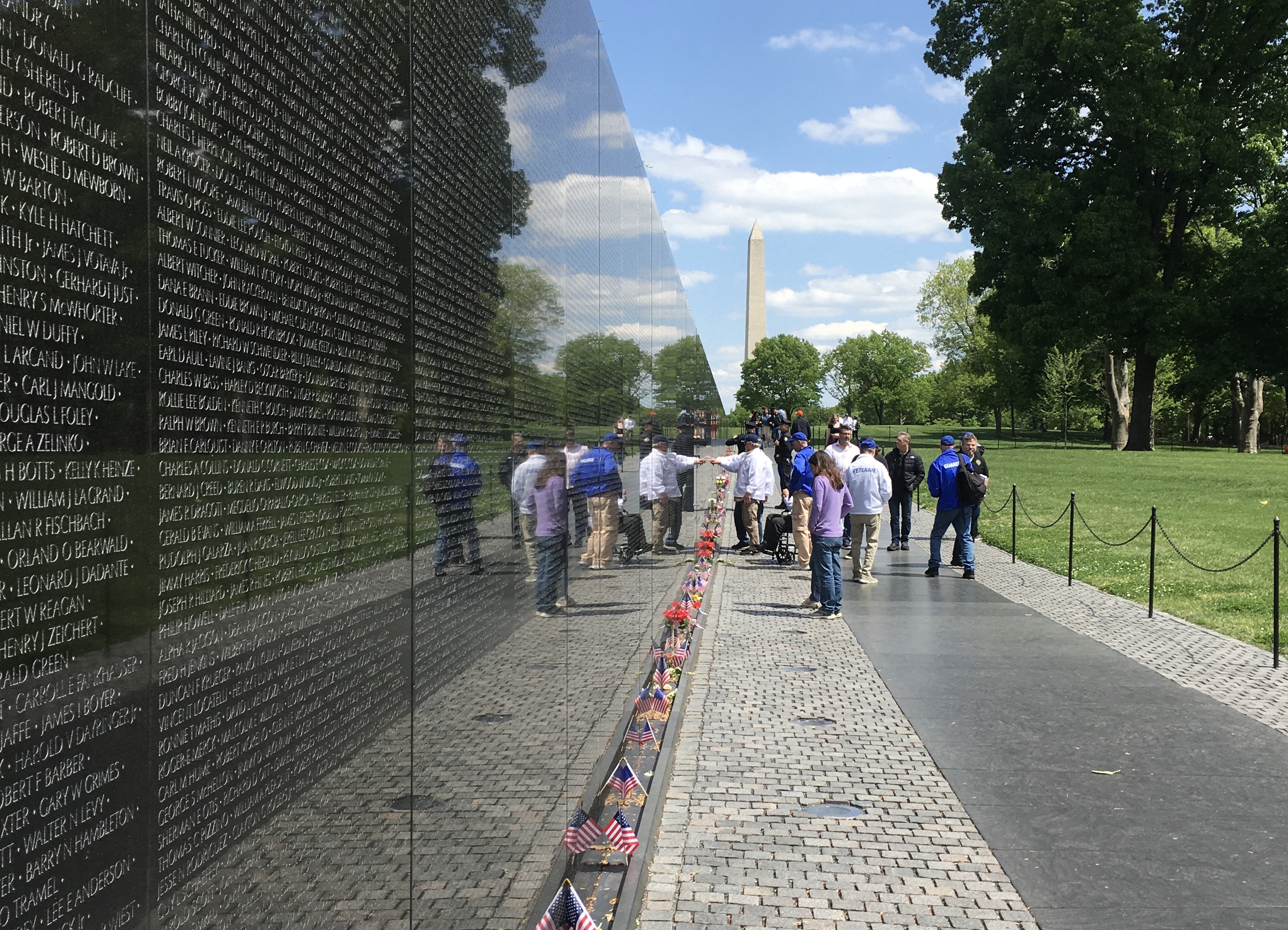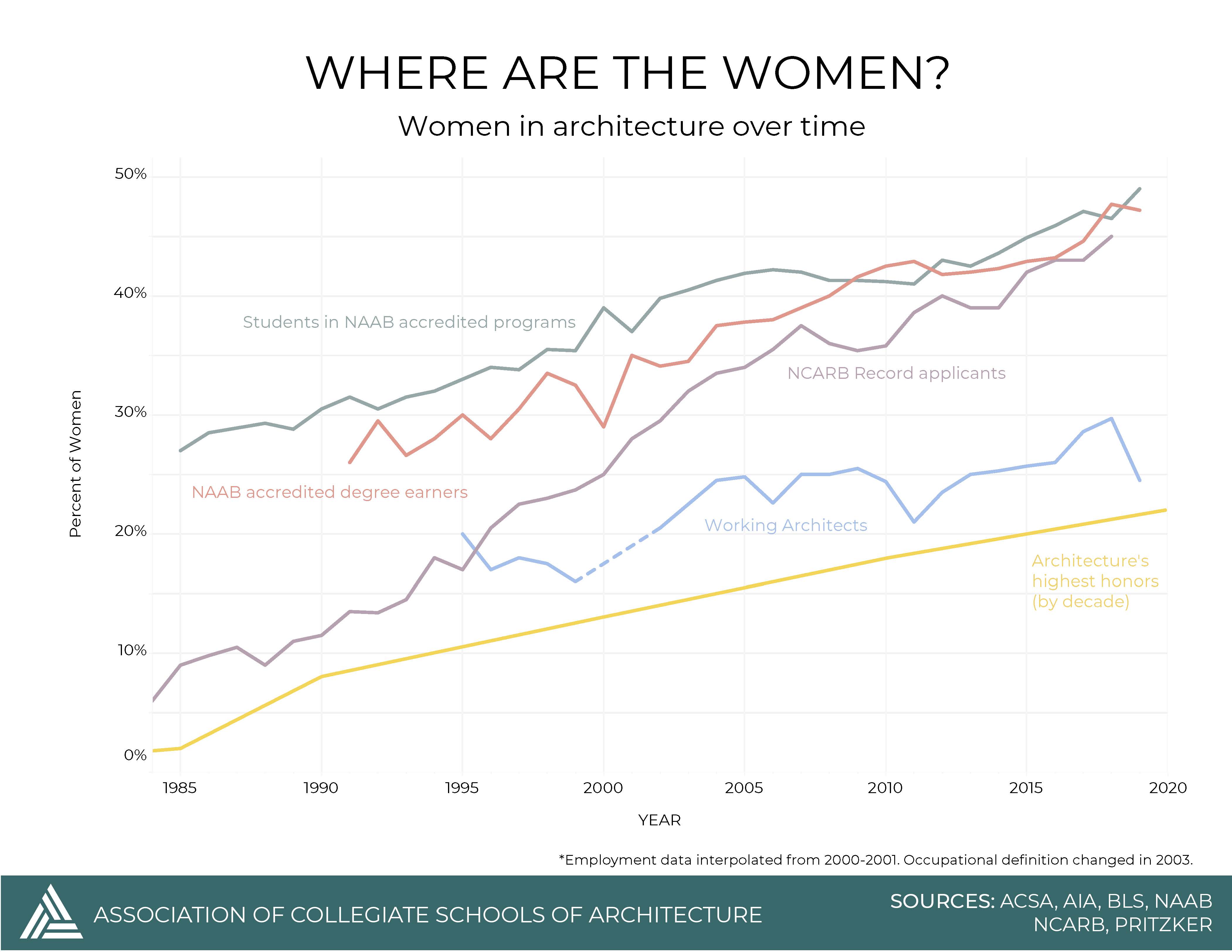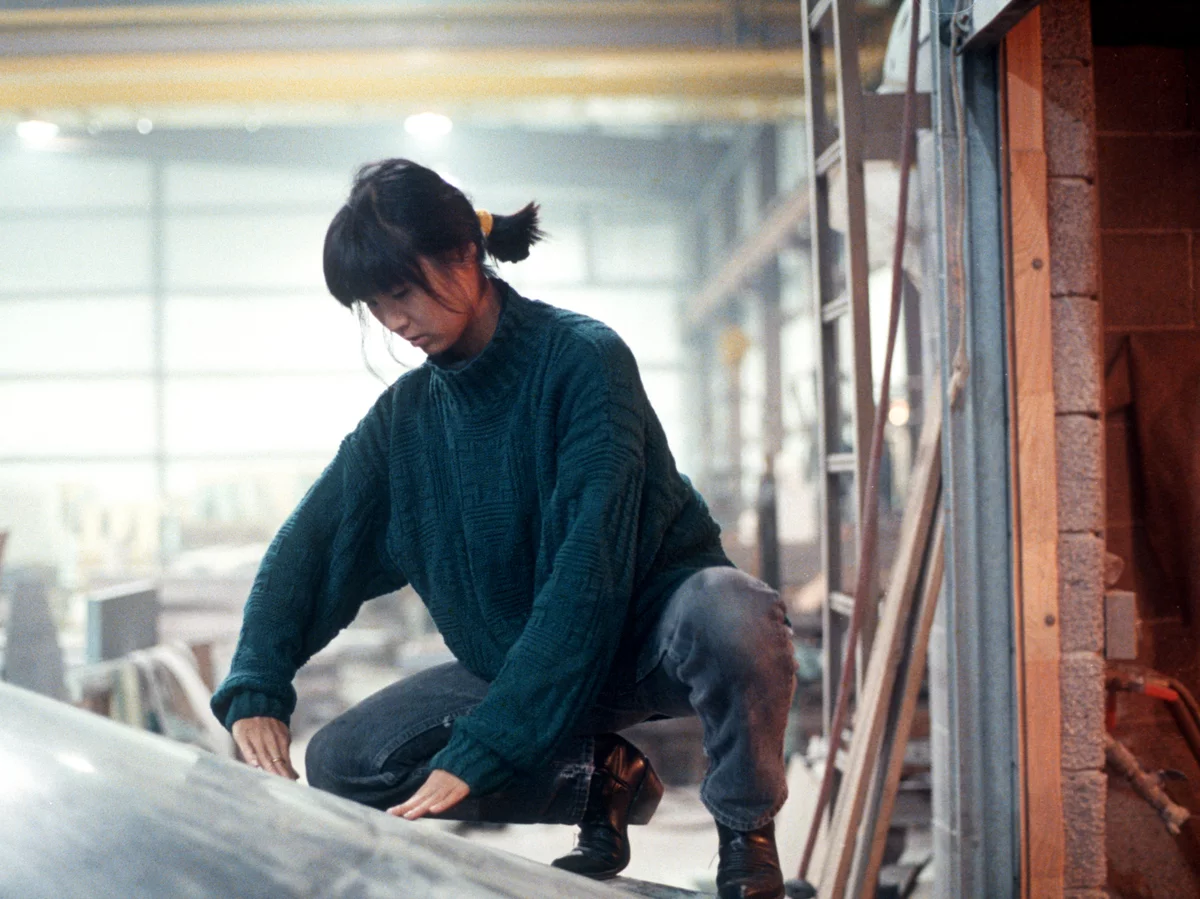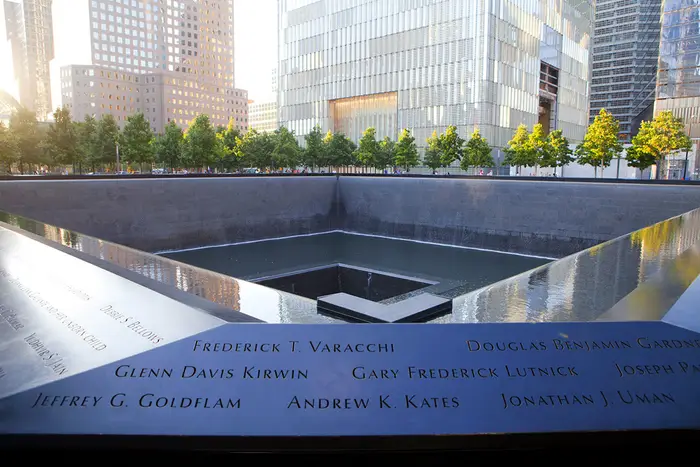The Vietnam War Memorial: How Maya Lin Revolutionized Memorial Design
Lin's Legacy

Photo by Sophia Zhang.
The memorial in 2023.
In 1981, Lin became the first female and Asian American to design a memorial on the National Mall, breaking a frontier for other designers that followed. She became a staple of the design world and was part of the movement that increased the rates of female and Asian American architects. The rates of female working architects and architecture students have steadily increased since 1985.

Graphic from Association of Collegiate Schools of Architecture.
In the present day, there are also far more Asian American architects, designers, and artists in the public eye. Names such as J. Meejin Yoon, Billie Tsien, and Michael Chen are well-known in these spheres and recognized as part of a diversified industry.
Maya Lin’s establishment as a designer led to other projects in both art and architecture, notably the Civil Rights Memorial in Montgomery, Alabama (1989), and her most recent installation focusing on environmental conservation, “What is Missing,” which Lin classifies as her “last memorial.”

Photo by Adam Stoltman, NPR.
Lin working on the Civil Rights Memorial.
Lin is credited with establishing new norms of design with the Vietnam War Memorial and her legacy lives on in impactful memorials that followed. In 2003, Michael Arad’s design for the 9/11 memorial competition was chosen by judges (including Lin) for its quiet, solemn nature.

Photo by Stephen J. Boitano, Getty Images.
The 9/11 memorial, built in 2006.
The memorial is made of reflective black stone engraved with the names of the victims, arranged by location of death and personal connections, similar to how Lin placed the veterans’ names chronologically to link the soldiers who died together. Both memorials crafted “a solid to make us feel the void” as Paul Goldberger, a prominent architecture critic, put it.
"I think like her memorial, [the 9/11 memorial is] very much designed to have an essential, simple and pure geometry to it, but that simplicity actually masks a tremendous amount of complexity and execution. To make something that looks simple is actually very, very complicated…"
~ Michael Arad, designer of the 9/11 memorial
In pioneering a simple, ungilded memorial that honors lives lost rather than the controversy of war, she set a new precedent for the way people approach funerary architecture. She nudged war memorials away from being ornate statues, flags, highly venerated figures—and more towards simple spaces where people could reflect deeply upon their own thoughts. The focus was on the individual and that simple idea that broke the frontier of design.
Video from Academy of Achievement.